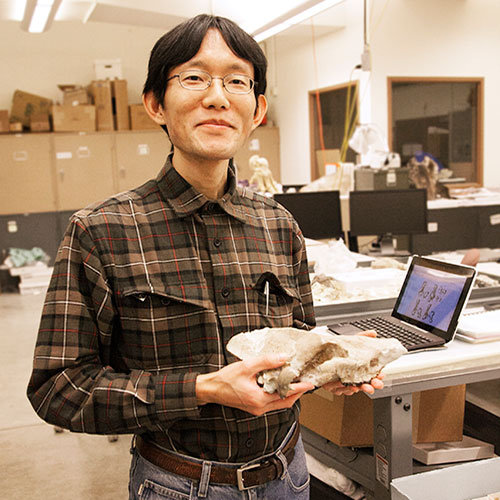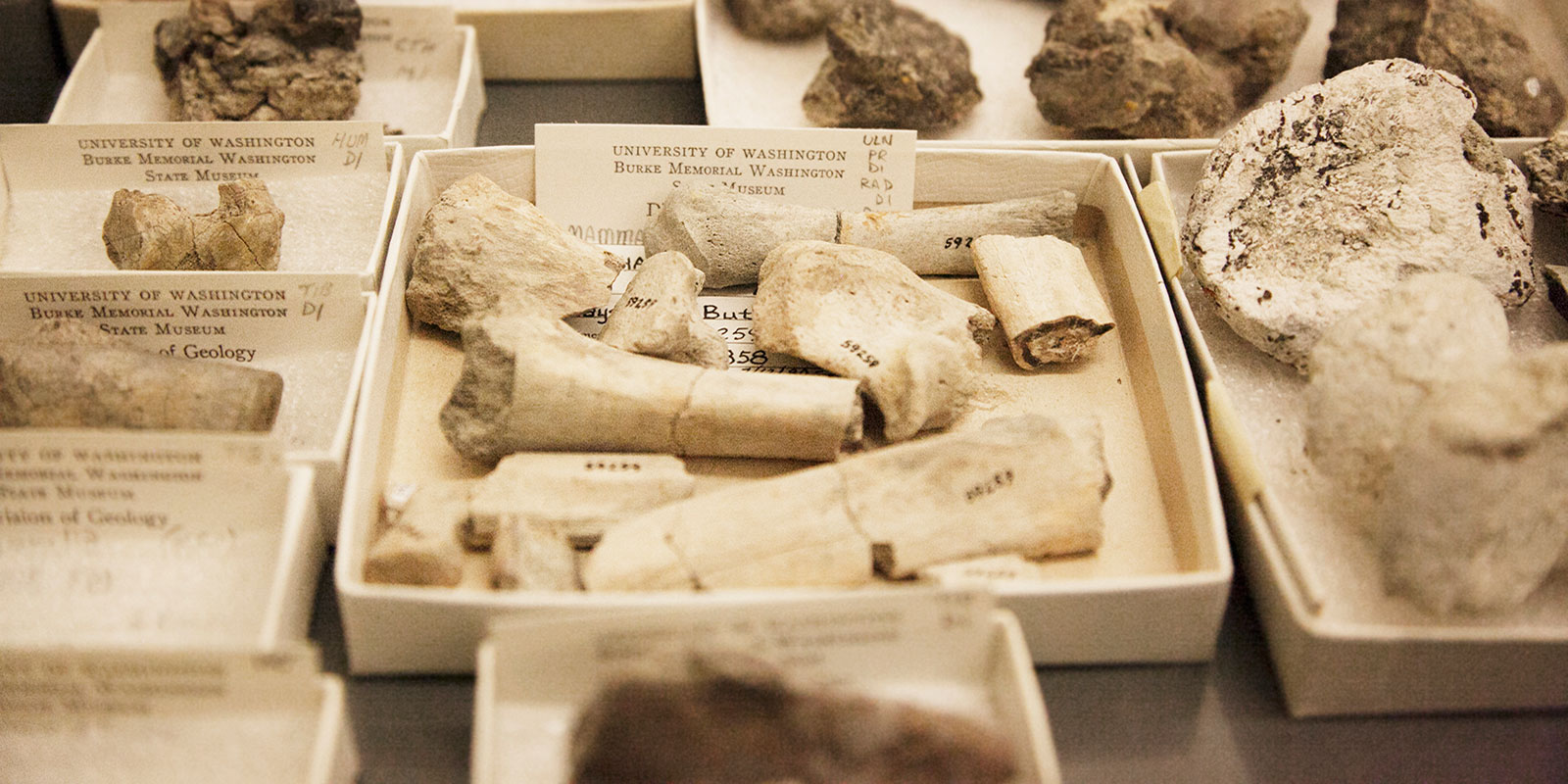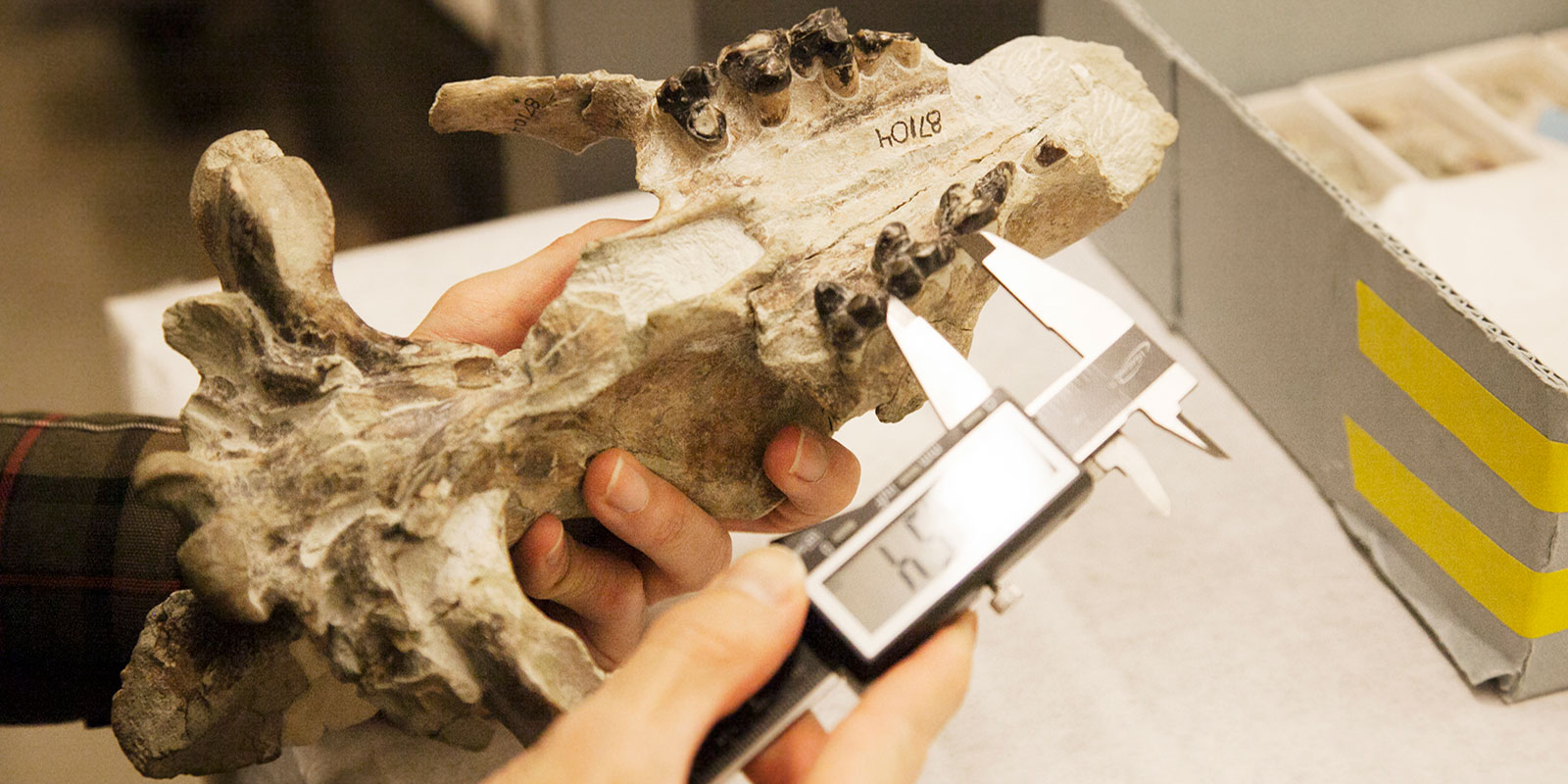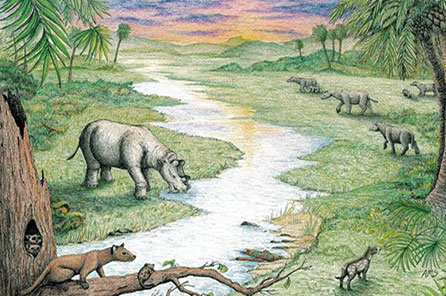In addition, I spent a day or so hunched over a tray of bone fragments, extracting parts of a young individual of a new carnivore species that I am describing for publication – one of only two known specimens of this new carnivore (one at the Field Museum, the other at Burke) that will help us take another step toward resolving the origin of carnivorans (dogs, cats, and their relatives).
I also took hundreds of close-up photos of small teeth using the museum's high-tech digitization station, which automates much of the process of taking dozens of pictures of one object at different focus levels (e.g., 50 photos for a tooth that's ~3 mm tall) and digitally stack them to produce a single extremely sharp image.
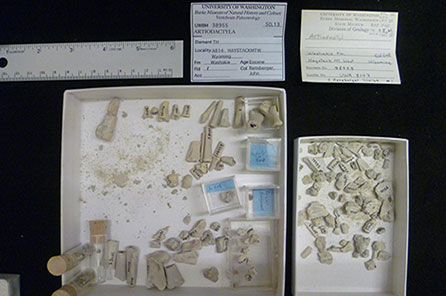
Tray of bone fragments including parts of a young individual of a new carnivore species that Susumu is describing for publication
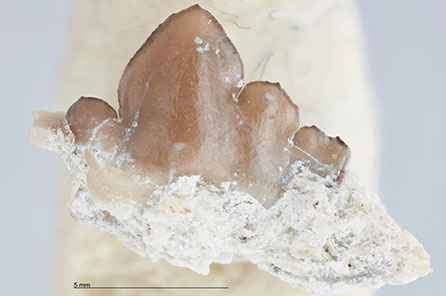
Tooth of carnivore species that Susumu is studying
It was an exciting and productive visit thanks to support from the paleontology collections staff – the part of the collection I looked at has a lot of potential for future research. I really appreciate the collections study grant, especially as a postdoctoral scientist who has limited options for funding museum visits.
---
Susumu Tomiya is a postdoctoral researcher at Des Moines University (Des Moines, IA) and a research associate of the Field Museum (Chicago, IL) and the University of California Museum of Paleontology (Berkeley, CA).
See more fossils in the Vertebrate Paleontology collection or learn more about the Vertebrate Paleontology Collection study grant.
